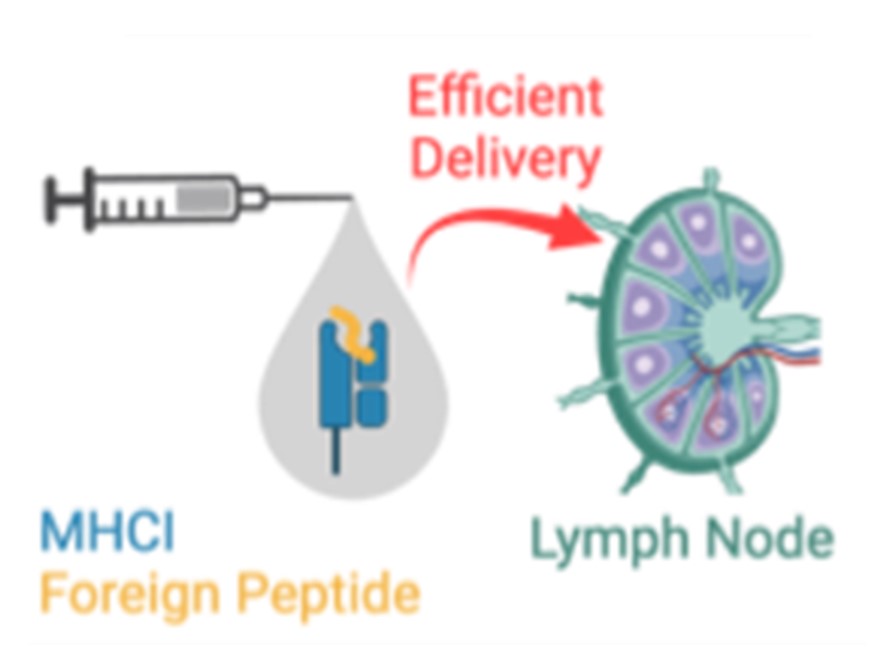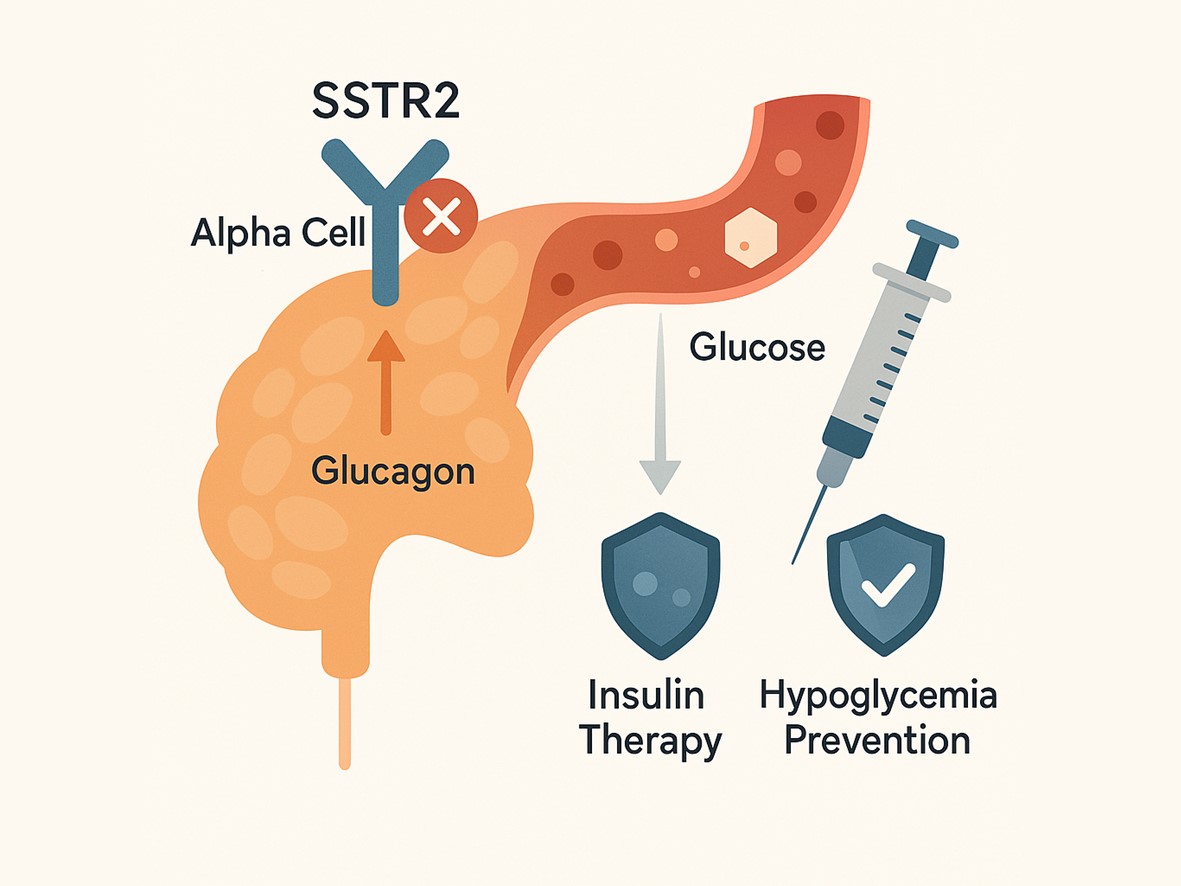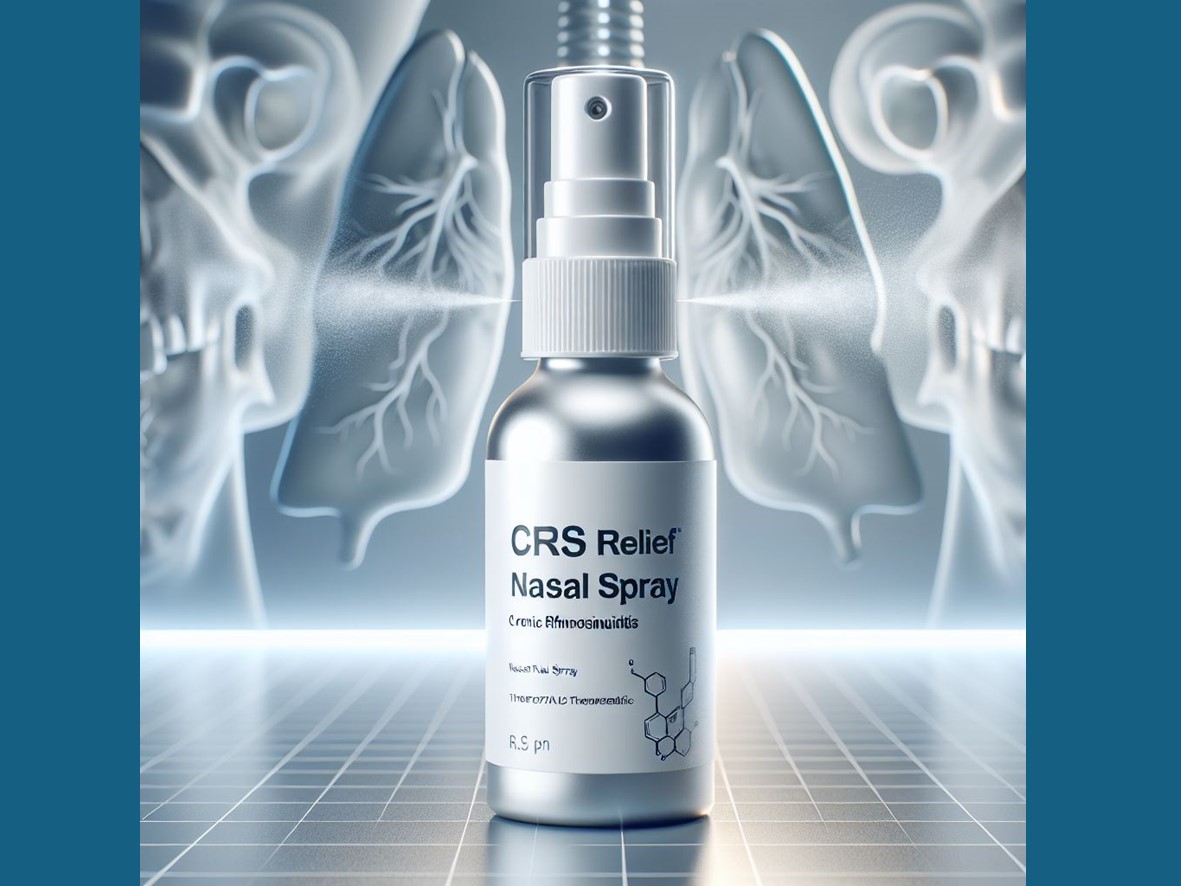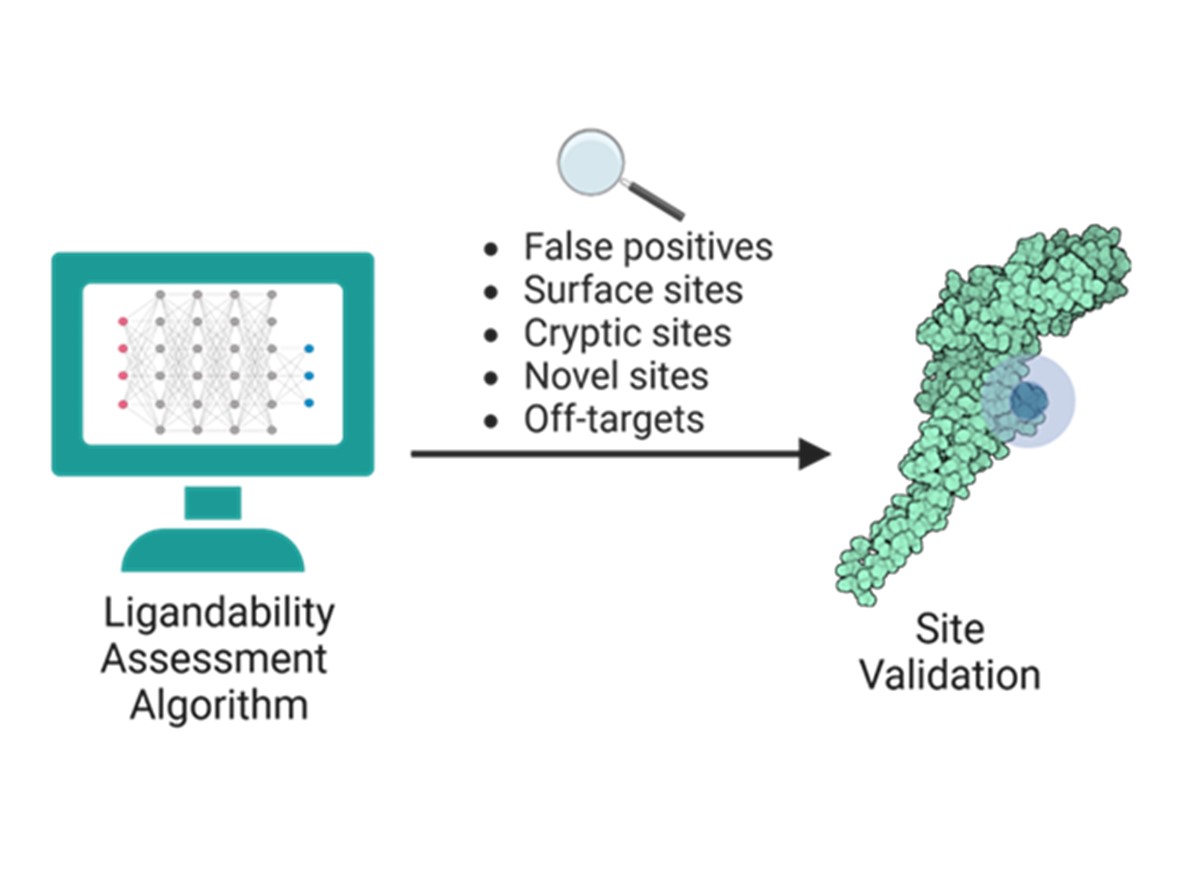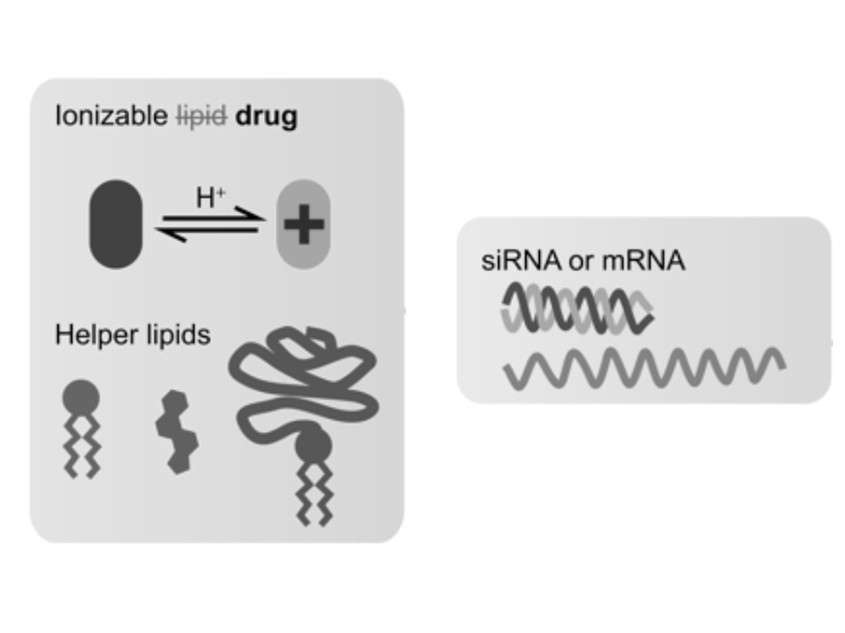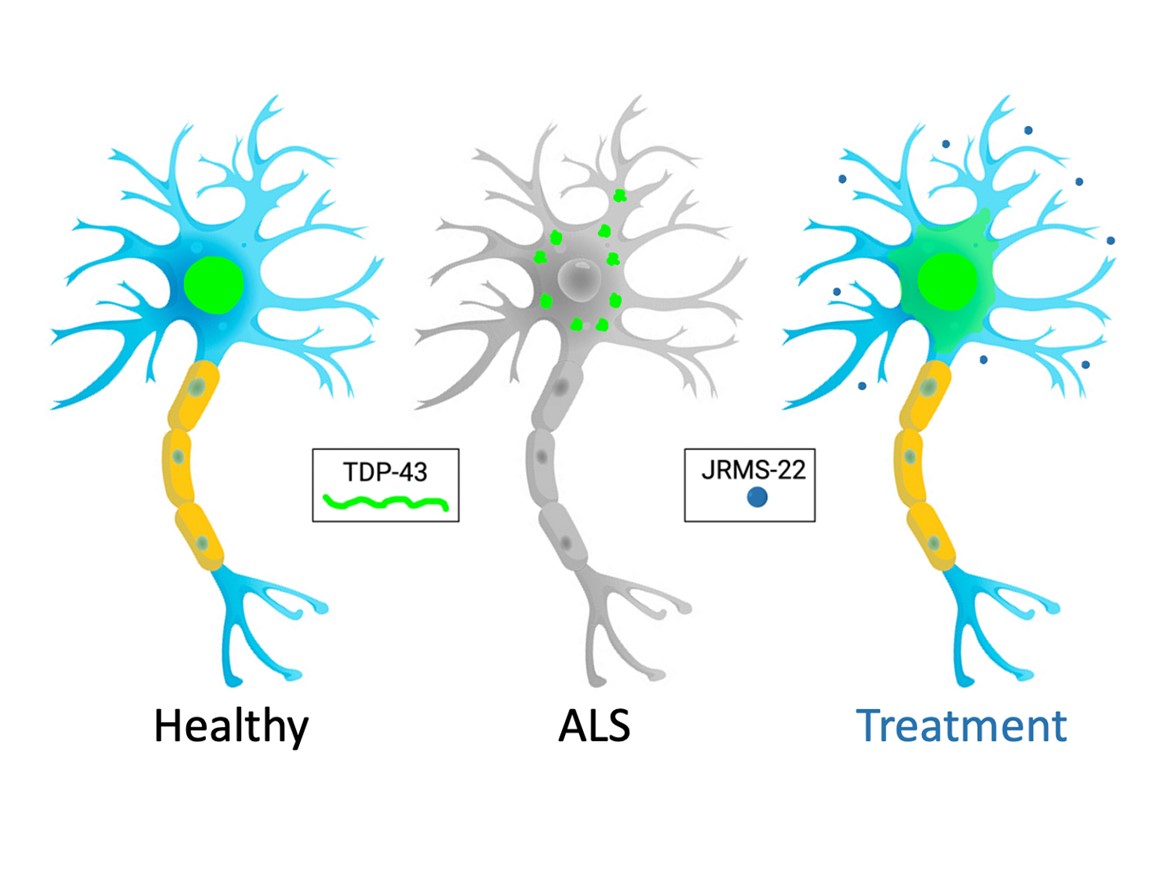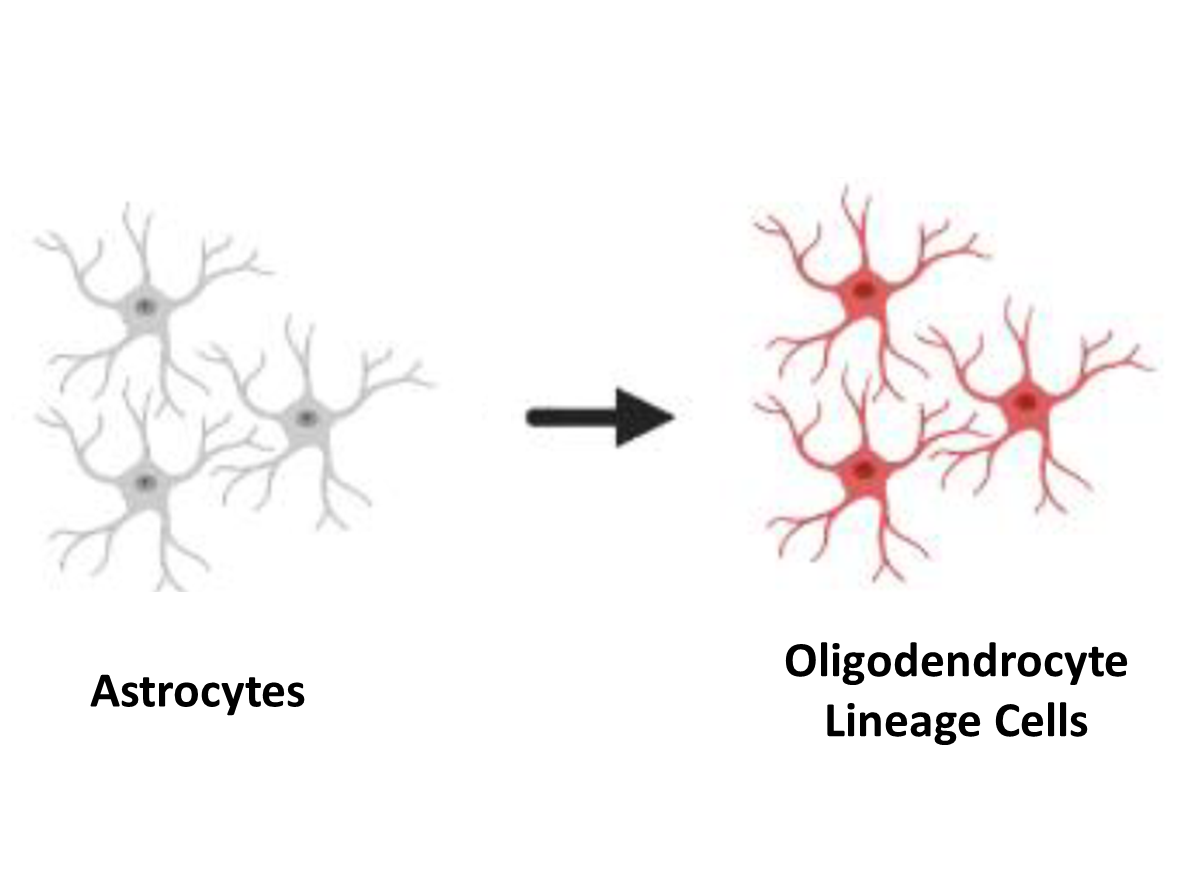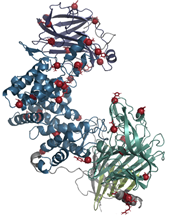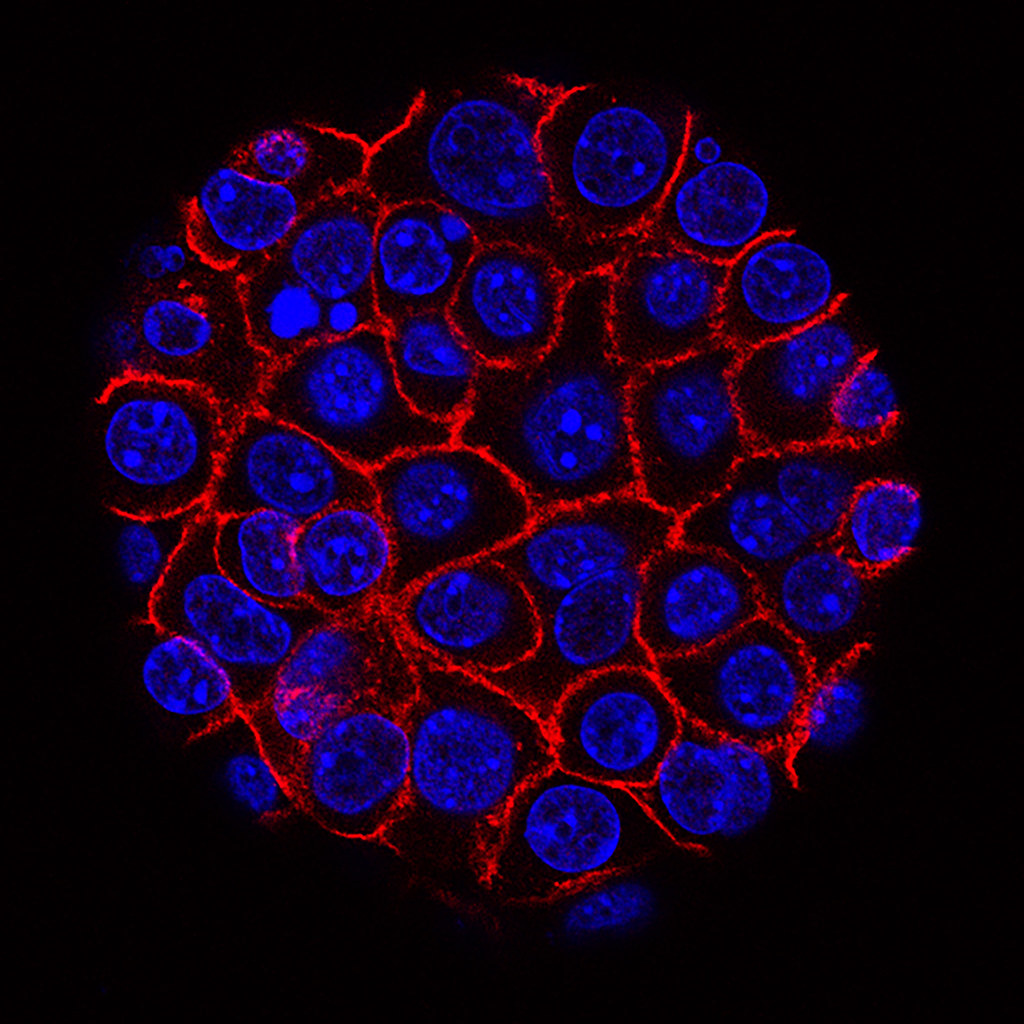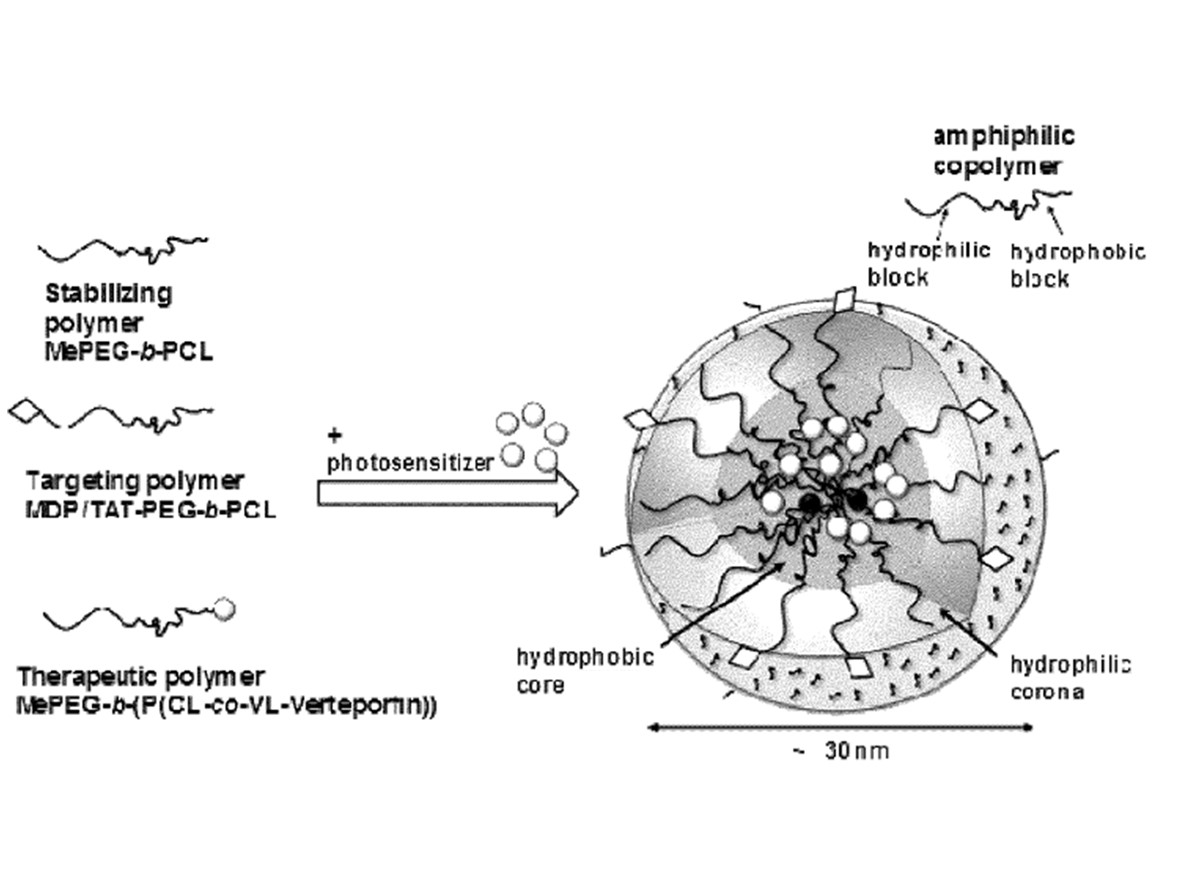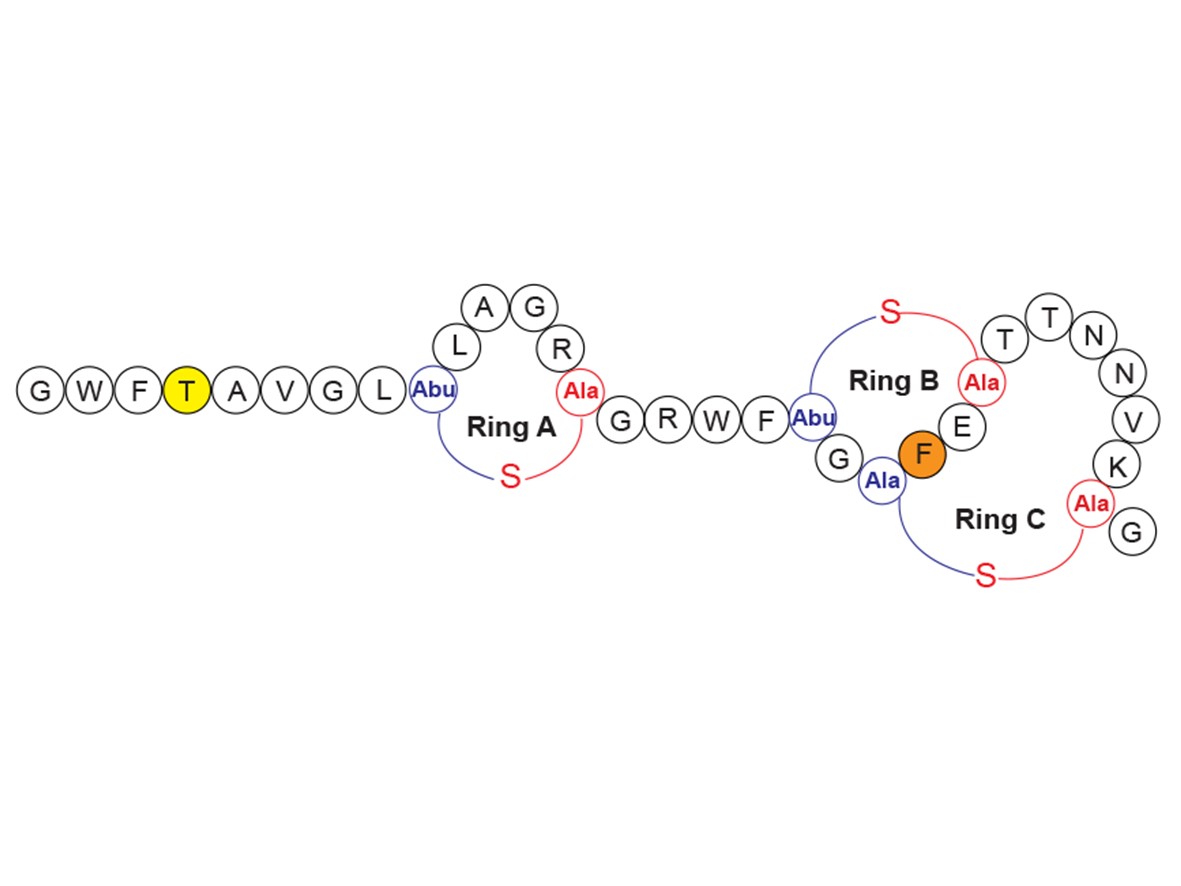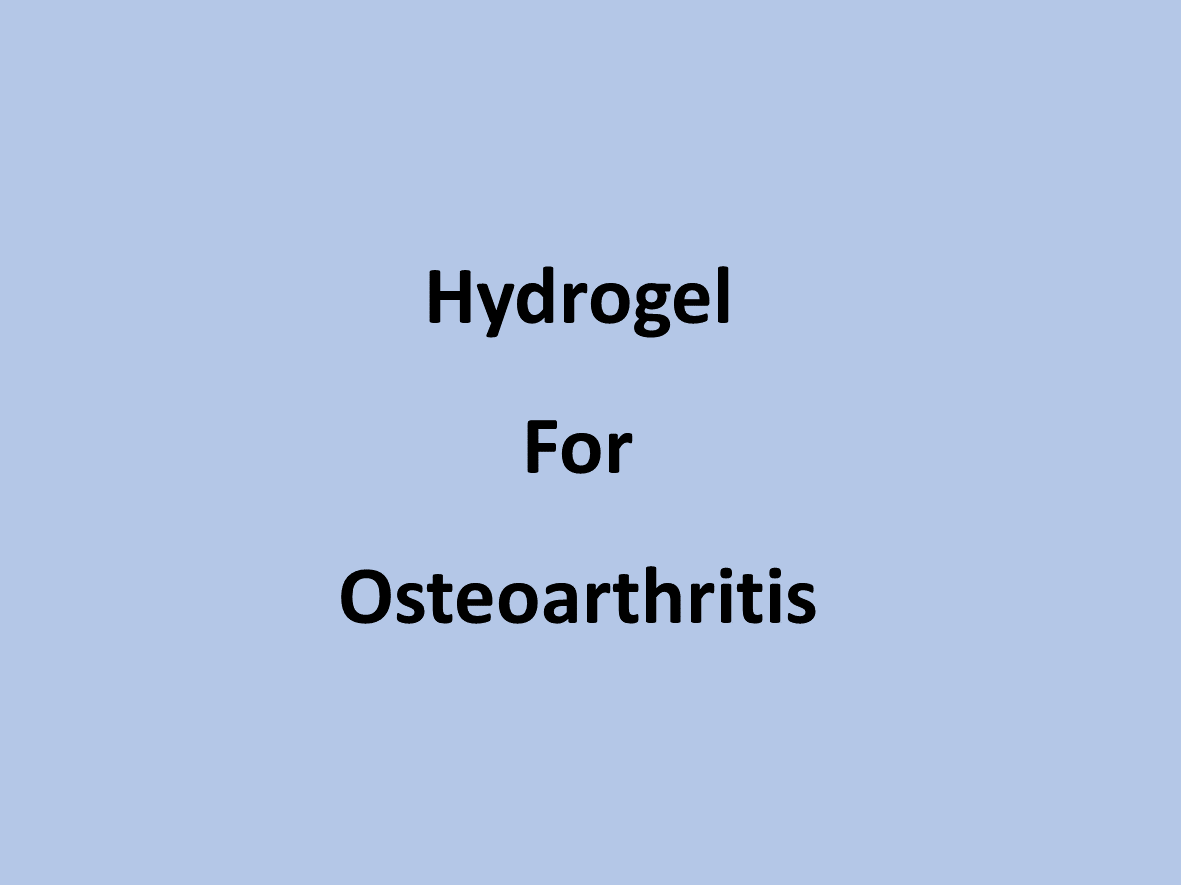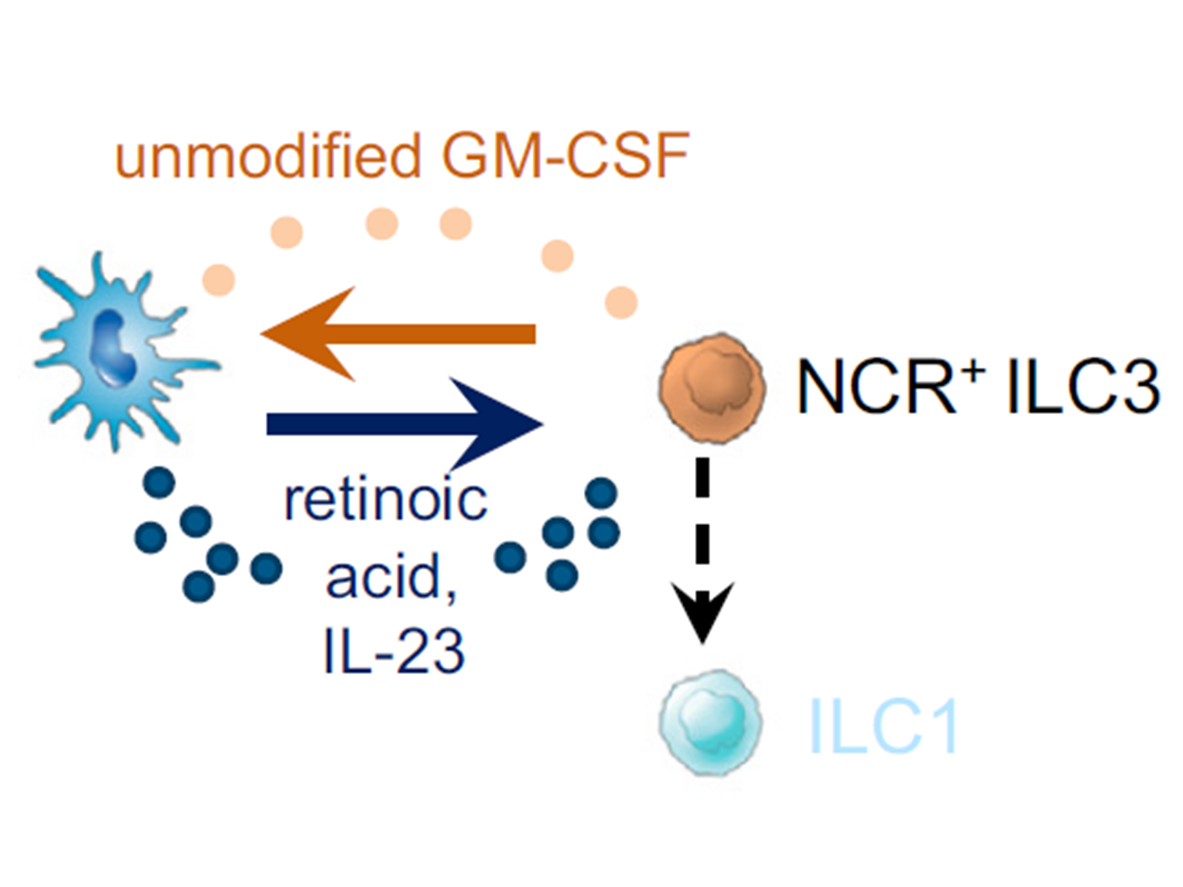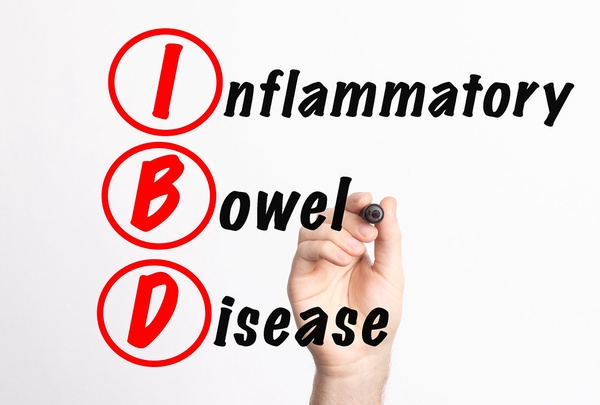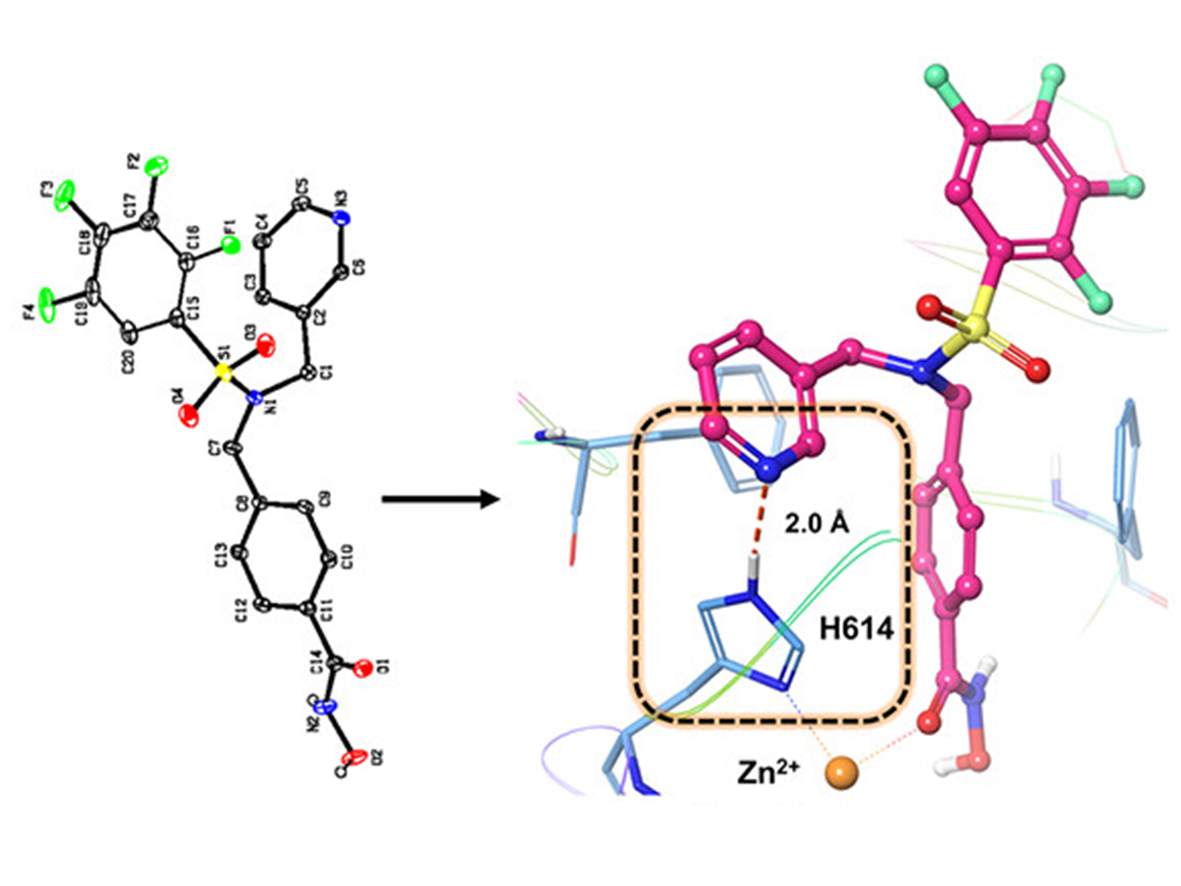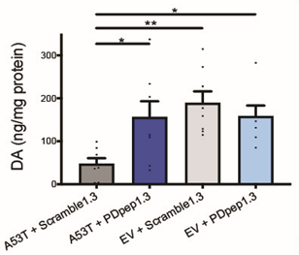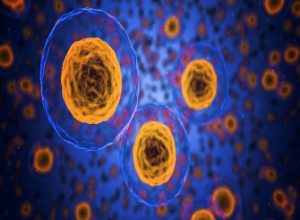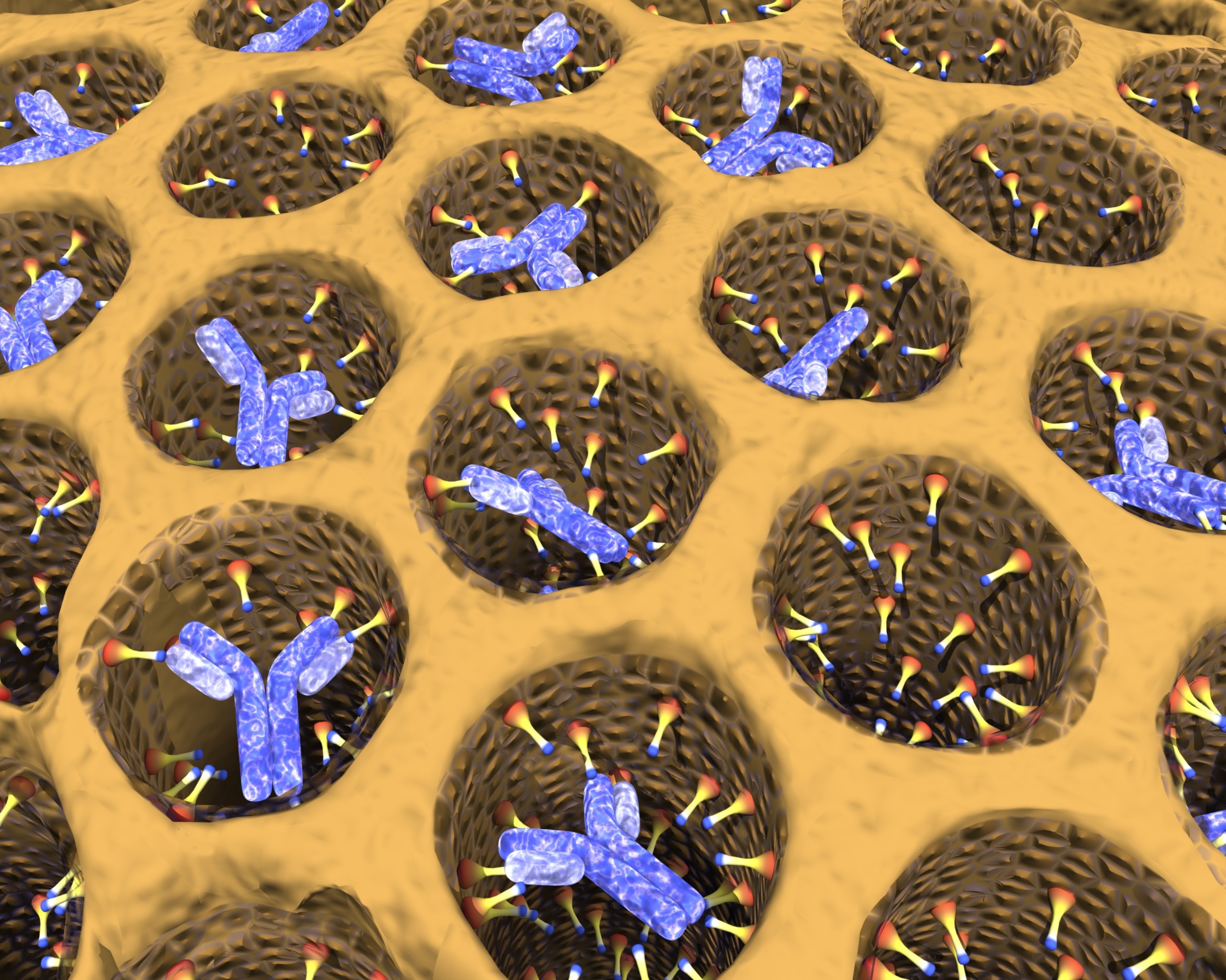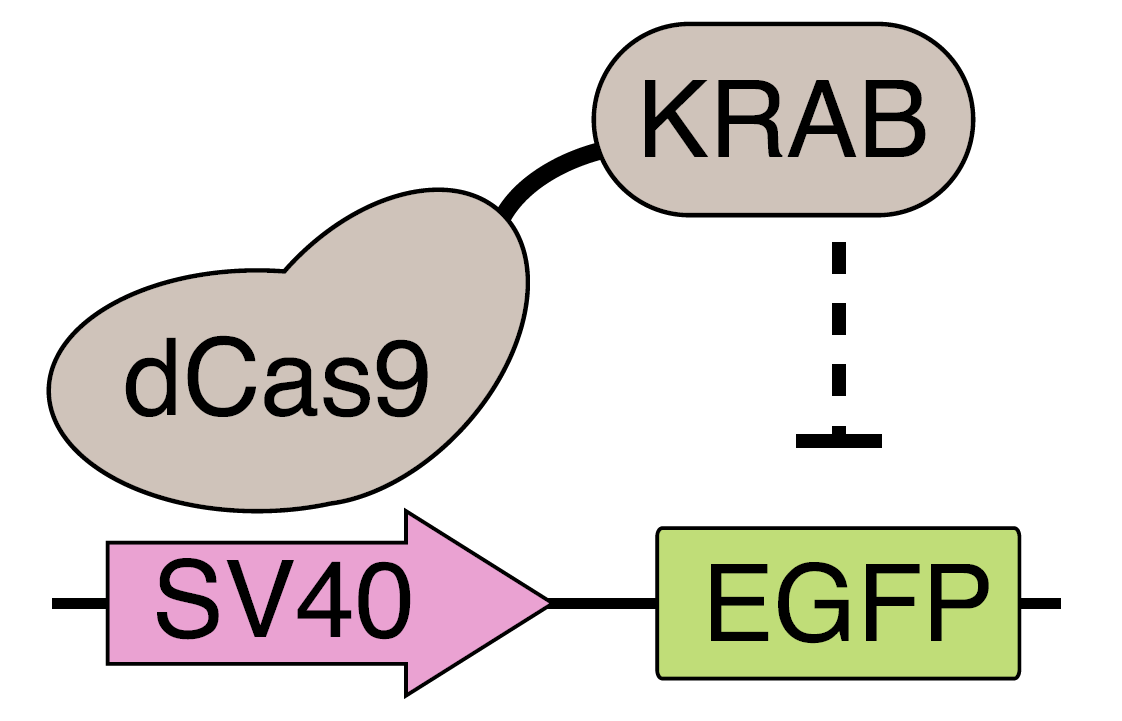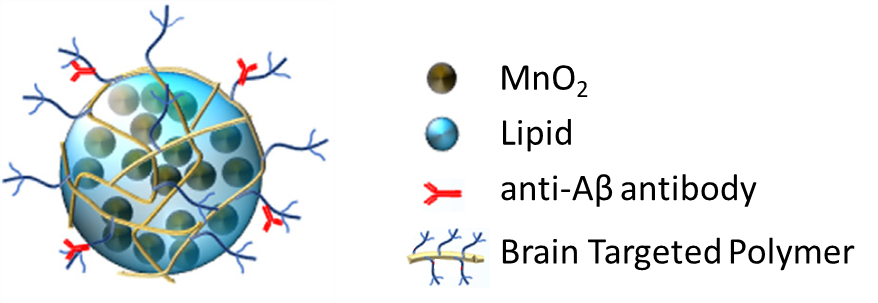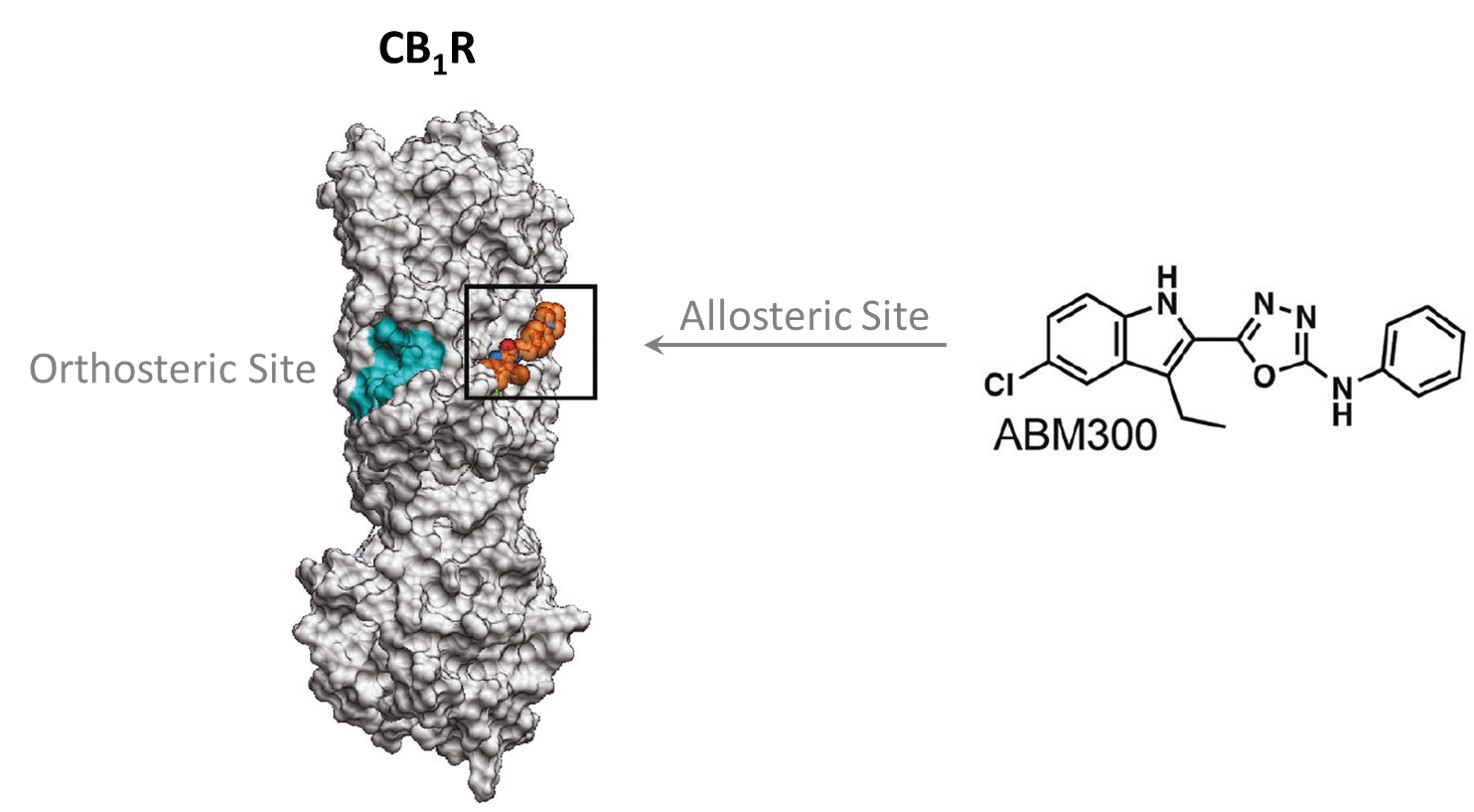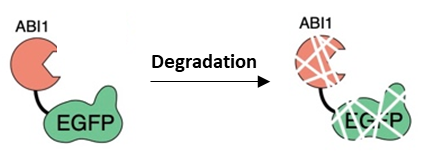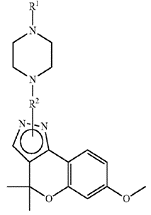Vaccines to mobilize B cells for cancer
Our technology is a vaccine that induces patients’ own B cells to produce antibodies that target cancer exclusive peptide MHCI molecules. Specifically, we have developed an antigen design that efficiently delivers a cancer peptide MHCI molecule to the lymph node. This antigen design uniquely triggers the production of peptide MHCI targeting antibodies while traditional antigens (i.e. peptides or whole protein from which the peptides are derived from) fail to do so. Overall, we provide a vaccine platform that induces continuous production of cancer exclusive antibodies directly within patients.
Read more...Keywords:
TherapeuticsSomatostatin Receptor Antagonists for Preventing Hypoglycemia
Novel somatostatin receptor antagonists, particularly targeting the somatostatin receptor subtype 2 (SSTR2), to improve glucose control.
Read more...Keywords:
TherapeuticsPolyvalent HCV Vaccine Developed Using a Novel Method for Producing Multivalent Vaccines
An innovative HCV vaccine incorporating the 20 C-terminal amino acids of HVR1, conjugated to Keyhole limpet hemocyanin (KLH).
Read more...Keywords:
TherapeuticsSystemic Ref-1 Inhibition for Treating Retinal Degeneration in Dry AMD
Inhibitors for Redox effector factor 1 (Ref-1) for treatment of dry AMD.
Read more...Keywords:
TherapeuticsCannabidiol-Based Nasal Rinse for the Treatment of Chronic Rhinosinusitis
Cannabidiol-based nasal rinse designed to treat chronic rhinosinusitis.
Read more...Keywords:
TherapeuticsCovalent Drug Target Discovery through Residue-Agnostic Assessment
A ligandability assessment tool for covalent inhibitor development.
Read more...Keywords:
Therapeutics, Research ToolsNovel Antibody Nanoparticle Platform for Therapeutics and Vaccines
A novel multivalent antibody platform that significantly enhances the potency of antibodies.
Read more...Keywords:
TherapeuticsCodelivery of High-Content Ionizable Drugs and Therapeutic Nucleic Acids
High-content drug-RNA nanoparticles formed by replacing the ionizable lipid of conventional LNP platforms for nucleic acid delivery with an ionizable, colloid-forming drug, thereby resulting in novel and high-content drug-RNA nanoparticles.
Read more...Keywords:
Drug Delivery System, TherapeuticsGene replacement therapy for GRIN disorder
Overexpression of GRIN1 as a novel and effective treatment for patients with GRIN1 variants.
Read more...Keywords:
TherapeuticsTherapeutics for TDP-43 Based Neurodegenerative Diseases
A small molecule ‘JRMS’ that harnesses the non-canonical chaperone activity of importin-β1 (Kpnβ1) to prevent and reverse protein aggregation as a therapeutic for ALS and the broader neurodegenerative diseases spectrum.
Read more...Keywords:
TherapeuticsFungal-selective Inhibitors of Hsp90
Inhibitors selective against fungal Hsp90. The starting point to design was a lead compound derived from resorcylate macrocycle natural products. A structure-activity relationship (SAR) program was conducted to guide the development of a resorcylate aminopyrazole (RAP) amide scaffold (Figure 1) with high efficacy and selectivity towards C. neoformans and C. albicans Hsp90.
Read more...Keywords:
TherapeuticsGene Therapy Vectors to Convert Astrocytes to Oligodendrocytes for CNS Diseases
Loss or dysfunction of oligodendrocyte lineage cells (OLCs) is responsible for a number of central nervous system (CNS) diseases or injuries such as multiple sclerosis, Alzheimer’s disease, cerebral palsy, and spinal cord injury. In addition, the pathological processes of these diseases are often driven by another resident CNS cell, the astrocyte. Direct lineage reprogramming allows for the generation of new OLCs (tissue regeneration) to be paired with the removal of disease promoting astrocyte (disease modifying mechanism). This two birds with one stone approach may result in more functional recovery for disease and injury than either approach alone.
Read more...Keywords:
TherapeuticsGlucose-Responsive Microgels and Microneedle Patch to Prevent Hypoglycemia in Diabetics
This device is a composite transdermal microneedle patch comprising a microneedle array and embedded microgel particles. The microparticles are made from three types of monomers – one provides glucose-responsive volume change, one for stabilizing native glucagon, and one for facilitating glucagon encapsulation. After the microneedle patch is applied, the microneedles penetrate the skin, swell quickly in the interstitial fluid, and enable the microgels in contact with the fluid and glucose. The microgels shrink at low glucose levels squeezing the encapsulated glucagon out, which then diffuses out of the needles to the blood circulation and to the liver thereby increasing blood glucose levels. The entire process automatically proceeds without external intervention of patients or care givers. Using the invented microgel system, the glucagon can maintain native structure and bioactivity at body temperature and under the conditions of making microneedle array.
Read more...Keywords:
Therapeutics, Medical DevicesEngineered Chondroitinase ABC for Treatment of Traumatic Injury to the CNS
A proteoglycan-rich glial scar forms after traumatic injury to the central nervous system (CNS) and plays a protective role following injury. However, its presence also inhibits long-term axonal regrowth preventing CNS recovery. Chondroitinase ABC (ChABC) is an enzyme that can degrade the constitutive proteoglycans of glial scars, chondroitin sulfate (CS) and dermatan sulfate (DS), and has previously demonstrated therapeutic potential in animal models as large as primates. However, its instability (unfolding, aggregation, and inactivation) at physiological temperature and pH have hindered clinical translation. While repeated bolus injections or constant infusion have been offered as solutions, they suffer from disadvantages like invasiveness and increased risk of infection. Reengineering approaches, while promising, have to date only yielded marginal improvements in stability.
Read more...Keywords:
TherapeuticsNUAK Inhibitors as Therapeutics for Cancer and Fibrosis
The Hippo signaling pathway is a key regulator of cell proliferation and cell death. High cell density and stress activate the pathway to stop cell proliferation and induce apoptosis. It has consequently been linked to diseases such as cancer and fibrosis. At the molecular level, the Hippo kinase cassette controls the activity of the transcriptional regulators, YAP and TAZ, through phosphorylation events (Figure 1a). Phosphorylation of YAP and TAZ by a kinase of the Hippo pathway, LATS, results in cytoplasmic localization where these molecules cannot exert their function. However, unphosphorylated YAP and TAZ localize to the nucleus where they can interact with transcription factors (e.g. TEAD) to turn on gene transcription and promote pro-oncogenic, pro-fibrotic outcomes. This implies that molecules that promote TAP and TAZ phosphorylation can act as therapeutics for cancer and fibrosis.
Read more...Keywords:
TherapeuticsChimeric Peptide and Delivery System to Prevent Restenosis in Vascular Disease
Balloon angioplasty, usually accompanied with a stent, is used to widen narrowed or obstructed blood vessels in peripheral and coronary arteries. However, restenosis, the re-narrowing of blood vessels, often occurs in patients following the intervention, due to vascular remodelling caused by the proliferation and migration of smooth muscle cells. Further, there are many peripheral applications where stents not clinically practical. Currently, this pathological remodeling event can be mitigated by introducing the gradual release of either of two classes of drugs (Taxane and Limus) from drug-eluting stents (DESs) and balloons (DEBs). However, these drugs have general cytotoxicity leading to cell death, endothelial dysfunction and late thrombosis.
Read more...Keywords:
TherapeuticsPhotodynamic Therapy for Deep Tumors and Tissues
Photodynamic therapy (PDT) can be used to treat a range of non-oncologic conditions as well as a number of solid tumors. It uses light, typically of infrared or visible wavelengths, to activate a localized photosensitizer that results in the selective destruction of unwanted cells. However, an important limitation is the low penetration depth of the employed electromagnetic radiation. Cherenkov light, which is generated when a charged particle passes through a dielectric, offers the possibility of deeper tissue penetration though its low intensity restricts its usefulness in PDT. Researchers at UHN and the University of Toronto have developed a modified version of PDT called Cherenkov-activated Nuclear-targeted Photodynamic Therapy (CHANT-PDT) for the treatment of deep tissues.
Read more...Keywords:
TherapeuticsGenetically Encoded Inhibitor to Increase CRISPR-Cas9 Genome Editing Efficiency
Genome editing with nucleases such as Cas9 relies on homology-dependent repair (HDR) for the targeted insertion or replacement of genetic material. However, as HDR competes with other double-strand break (DSB) repair pathways such as non-homologous end joining (NHEJ), HDR efficiency can often be limiting, posing a challenge to achieving desired levels of genomic alterations. Our researchers have developed a genetically encoded inhibitor of 53BP1 that increases the efficiency of homology-directed repair of DSBs.
Read more...Keywords:
TherapeuticsPrevention of Dental Diseases using Novel Bacterial Peptides
Dental diseases are often caused by a perturbation in the balance of the oral microbiome. Bacterial species that confer positive health benefits may reduce in number shifting the oral composition to more virulent strains and increasing the chance of disease. This harmful shift can be reversed by using commensal bacteria to target and crowd out these pathogens. Researchers at the University of Toronto have isolated a Streptococcus salivarius strain (SALI-10) that can interfere with the growth of periodontal pathogens.
Read more...Keywords:
TherapeuticsProbiotics to Prevent Dental Cavities
Dental caries (i.e., cavities) occur in 60-90% of school children and nearly 100% of adults. Prevention of this oral disease continues to present serious challenges worldwide. These challenges persist in spite of the fact that caries is known to be a bacterially-mediated process for more than a century. Certain “human-friendly” bacteria which release antimicrobials have the potential to fight diseases caused by pathogenic biofilms. However, probiotics against dental caries have not worked well since many of these probiotic bacteria do not persist in the oral cavity.
Read more...Keywords:
TherapeuticsAn Injectable Hydrogel for Delivery of Therapeutics for Osteoarthritis
Osteoarthritis occurs when the protective cartilage at the bone joints break down over time. There is no cure for this disease, with one of the first standards of options for disease management being treatments such as nonsteroidal anti-inflammatory drugs (NSAIDs). However, this drug class often has undesirable side effects (e.g. liver and kidney damage) which have been attributed to non-specific systemic delivery. Localized injections directly into the joint space can alleviate these issues, but current methods suffer from reduced retention times. Polymeric solutions can solve this problem, if their other shortcomings such as poor mechanical properties, non degradability, toxicity, poor adhesion, slow gelation and burst release of drugs can be solved.
Read more...Keywords:
Drug Delivery System, TherapeuticsAppetite-Suppressing Cytokinin for Weight Loss and Obesity Treatment
Obesity has increased to pandemic levels and is associated with an increased risk of metabolic diseases, including type 2 diabetes mellitus (T2DM), cardiovascular disease and cancer. While the most effective means to reduce weight is healthy eating and exercise, adherence to these recommendations are a challenge, especially in individuals with a high body weight or BMI >30. Alternatives to these solutions include anti-obesity therapeutics and supplements. Limited therapeutic options are approved by the FDA, such as Glp-1R agonists, but they are restricted to high BMI patients, are costly for insurers/individuals, have limited efficacy or have unpleasant side effects. Similarly, several supplements are available, but none are regarded as being efficacious unless combined with diet and exercise. Consequently, an unmet need in effective weight loss management exists especially for those individuals in the BMI range of 25 – 32 who want to lose a few pounds to avoid the progression towards metabolic disease without altering their current lifestyle.
Read more...Keywords:
TherapeuticsGenetically Engineered Proteins for Diagnosis and Treatment of Crohn’s Disease
Deregulated balance of the immune system strongly contributes to the development of chronic inflammatory conditions, like inflammatory bowel disease (IBD). A critical cellular element in sustaining immune and tissue homeostasis are mononuclear phagocytes (MNP), hematopoietic, migratory cells with superior capability to engulf and kill microbes, as well as priming and sustaining adaptive immune responses. Convincing animal research and accumulating evidence in humans suggest that these cells are fundamental in determining whether the immune system is activated or remains tolerant towards microbes. Key to their regulation, particularly in the intestinal tract, is the cytokine Granulocyte Macrophage-Colony Stimulating Factor (GM-CSF). Every 5th patient diagnosed with Crohn’s disease (CD) displays neutralizing autoantibodies (AuABs) against GM-CSF, posing a possible explanation for why previous phase II clinical trials, despite reporting overall improvement of symptoms, failed to reach statistically significant outcomes. If mechanisms to evade these antibodies can be designed, GM-CSF may prove to be an effective treatment against Crohn’s disease.
Read more...Keywords:
Diagnostics, TherapeuticsTherapeutic Targeting of a Novel Gene Product in Inflammatory Bowel Disease
Inflammatory bowel disease (IBD), comprising Crohn’s disease and ulcerative colitis, is characterized by chronic, recurrent mucosal inflammation of the digestive tract. Current treatments come with considerable side effects, are very expensive, and only work in ~50% of patients. Despite recent advances, IBD continues to rise in incidence, burdening our health care system, thereby emphasizing the need to find more effective therapies to treat these diseases.
Read more...Keywords:
Therapeutics, Small MoleculesSelective HDAC6 Inhibitors for Neurodegenerative Disease
HDAC6 plays an important role in neurological, inflammatory, and other diseases; and thus is an important target for therapeutic intervention. To date, there are no FDA-approved HDAC6-targeting drugs and most pipeline candidates suffer from poor target engagement, inadequate brain penetration, and low tolerability. There are five HDAC6 clinical candidates for the treatment of mostly non-CNS cancers as their pharmacokinetic liabilities exclude them from targeting HDAC6-implicated neurological diseases, urging for the development to address these challenges. They also demonstrate off-target toxicity due to limited selectivity, leading to adverse effects in patients. Selective inhibitors have thus been the focus of development over the past decade, though no selective and potent HDAC6 inhibitor has yet been approved to date.
Read more...Keywords:
TherapeuticsPeptide Therapeutic for Parkinson’s Disease
Parkinson’s disease is a disabling and progressive neurological disorder characterized by degeneration of dopamine-producing neurons. Current therapies to replace dopamine are only symptomatic and are associated with considerable complications as the disease progresses. No disease-modifying therapies that slow or stop disease progression are available or likely to emerge soon. With Parkinson’s disease affecting over 6 million people worldwide and being the fastest growing neurological disease, this is a huge unmet need in neurodegeneration.
Read more...Keywords:
TherapeuticsA Method to Improve Memory and Mood by Inhibiting Cell-Surface Expression of Alpha 5 Subunit-Containing GABA-A Receptors
This discovery is a unique technique for treating memory and mood disorders. The method is comprised of the administration of a compound that inhibits the protein-protein interaction. These compounds can be used to treat or prevent disorders associated with increased alpha 5 GABA-A receptor function such as memory and mood disorders associated with inflammation or after general anaesthesia.
Read more...Keywords:
TherapeuticsMethods for the Prevention and Treatment of Memory Impairment
Over 234 million surgical operations are performed worldwide each year. General anesthetics have dramatically reduced human suffering, but the mechanisms of action of these drugs remain poorly understood. The hippocampus (memory centre in the brain) shelters a population of inhibitory receptors that underlie the memory-blocking properties. GABA (i.e., g-aminobutyric acid) receptors are the most abundant and widely distributed within the central nervous system of mammals. Therefore, these receptors play pivotal roles in virtually all brain functions including memory. Up- and down-regulating the activity of these receptors impairs and improves memory function, respectively. Dr Orser's research aims to understand how anesthetics regulate key inhibitory receptors in the brain. Post-anaesthetic memory loss represents an undesirable and poorly understood adverse effect. Such memory issues after surgery may lead to reduced quality of life, increased admissions to long-term care facilities, premature retirement and death. Modulating the activity of GABA receptors before, during, and/or after the surgery may help patients avoid memory issues, and reduce secondary heath care costs due to general anesthesia.
Read more...Keywords:
TherapeuticsUBA5 Inhibitors for the Treatment of Cancer and Leishmaniasis
Cancer cells produce and break down proteins more rapidly than normal cells, and are more sensitive to changes in the regulation of processes involving proteins. The ubiquitin-proteasome system (UPS) is the main protein process that governs protein recycling in cells, and is overactive in many cancers such as leukemia and multiple myeloma. The proteasome is a large protein analogous to the recycling plant of the cell, and inhibition of the UPS with proteasome inhibitors, such as Velcade (bortezomib), results in effective cancer cell death due to the accumulation of undigested proteins. This invention involves the development novel drugs with the aim of making these cancer cells more susceptible to drug treatments, leading to the use of milder drug doses and the prevention or reduced occurrence of drug resistance.
Read more...Keywords:
TherapeuticsRecombinant Antibodies Network (RAN)
The Recombinant Antibody Network (RAN) is a multi-institutional research consortium (member institutions: The University of Toronto, University of California San Francisco and The University of Chicago) created accelerate the identification and development of recombinant antibodies raised against valuable and challenging targets to support drug development and cutting edge biomedical research. The RAN was founded by three ex-Genentech antibody engineers. To date the team has screened and validated over 880 antibodies, some of which are now available for licensing as therapeutics.
Read more...Keywords:
Therapeutics, Diagnostics, Research ToolsProtein Domains for Controlling Gene Expression
Precisely controlled regulation of gene expression in cells, tissues, and organisms is one of the major challenges in tissue engineering, cell-based therapies, and gene therapy. Controlled gene expression in cells is achieved either by exogenously introducing cDNAs by transfection or viral transduction, or by introducing sequence-specific transcriptional regulators. These regulators include zinc-finger nucleases, transcription activator like effectors (TALEs), or enzymatically inactive Cas9 (dCas9) which are fused to transcriptional activation or repression domains to achieve the desired effect on gene expression. Of these techniques, CRISPR interference (CRISPRi) based on the fusion of inactive Cas9 (dCas9) to the Krüppel-associated box (KRAB) repressor, is a powerful platform for silencing gene expression. However, it suffers from incomplete silencing of target genes.
Read more...Keywords:
Therapeutics, Research ToolsNanoconstructs for Diagnosis and Treatment of Alzheimer’s Disease
Alzheimer’s disease (AD) is the most common cause of dementia affecting ∼ 5.8 million Americans and 40-50 million people worldwide. Despite the burden of this disease, there is no cure for Alzheimer’s with standard-of-care treatments only able to manage symptoms. Furthermore, clinical diagnosis is imprecise and only suitable for later stages of the disease as it relies on detecting impaired memory and cognitive function, which consequently also results in late intervention. However, changes in neurological biomarkers precede cognitive decline by 15 – 20 years and can thus act as indicators of Alzheimer’s disease enabling early diagnosis and clinical intervention. Though several techniques such as cerebrospinal fluid sampling and various medical imaging methods have demonstrated promise in this regard, none of these have progressed to routine use.
Read more...Keywords:
Therapeutics, DiagnosticsA Small Molecule Allosteric Modulator of CB1R for Treatment of Psychosis and Schizophrenia
Psychosis and schizophrenia are associated with dysregulation of multiple neurotransmitter systems, including dopamine, serotonin, gamma-aminobutyric acid, and glutamate. Treatments for these disorders rely on the use of antipsychotics which target several G-protein coupled receptors (GPCRs) such as those for dopamine and serotonin. However, these therapeutics are associated with a range of side effects including extrapyramidal motion, sedation, metabolic syndrome, and weight gain. The ability of the endocannabinoid system, including the cannabinoid CB1 receptor (CB1R), to modulate dopamine neuron signalling offers a route to indirectly correct for the hyperdopaminergic underpinnings of these disorders while possibly avoiding the negative side effects of current antipsychotics. As efforts to target CB1R at the orthosteric site have not yielded beneficial clinical outcomes, allosteric modulation may offer an alternative pathway.
Read more...Keywords:
TherapeuticsTargeted Protein Degradation using Novel E3 Ligases
Targeted protein degradation (TPD) is an alternative approach to conventional paradigms (e.g. small molecule inhibitors) that target disease. In this technique, a PROteolysis TArgeting Chimera (PROTAC) or a molecular glue is used to initiate the degradation process of the targeted protein. While these two molecular classes are mechanistically distinct, they both enable degradation by recruiting an E3 ligase, an enzyme which enables the transfer of the ubiquitin tag needed for proteasome-mediated degradation. One obstacle to the development of these treatment modalities is that the two E3 ligases largely used with this approach only work with some proteins. Thus, identification of new E3 ligases can increase the disease targeting space of targeted protein degradation therapeutics.
Read more...Keywords:
Therapeutics, Research ToolsTunable Activation of Gene Expression for Therapeutic Use
Precisely controlled regulation of gene expression in cells, tissues, and organisms is one of the major challenges in tissue engineering, cell-based therapies, and gene therapy. Controlled gene expression in cells is achieved either by exogenously introducing cDNAs by transfection or viral transduction, or by introducing sequence-specific transcriptional regulators. These regulators include zinc-finger nucleases, transcription activator like effectors (TALEs), or enzymatically inactive Cas9 (dCas9) which are fused to transcriptional activation or repression domains to achieve the desired effect on gene expression. Of these techniques, CRISPR activation (CRISPRa), based on the fusion of inactive Cas9 (dCas9) to various trans-activation domains, is a powerful platform for activating gene expression. However, non-human activators (e.g. VP16) can elicit an immune response necessitating the development of human activators of comparable and tunable efficacy.
Read more...Keywords:
Therapeutics, Research ToolsAgonists for GPR55 as Multi-Disease Targets
The G protein-coupled receptor GPR55 is a ubiquitously expressed protein that has been linked to several different diseases or conditions making it a potential therapeutic target. Agonists acting on GPR55 are expected to play a therapeutic role in diabetes, gut mobility, bone turnover, and diseases of the cardiovascular and central nervous systems. Antagonists are also expected to influence bone turnover, while also affecting treatment of inflammation, pain, cancer, and obesity. Targeting this receptor could therefore provide a means to modulate several different diseases.
Read more...Keywords:
TherapeuticsDesign of Short Promoters for Gene Therapy
Gene therapy using space-constrained delivery vehicles like adeno-associated viral (AAV) vectors can benefit from the shortening of large tissue-specific promoters. This motivated efforts to make promoters highly compact while maintaining activity and specificity. However, the promoter design process is largely iterative and experimental. It typically involves the synthesis of a promoter fragment roughly up to 3000 nucleotides upstream and ∼50 nucleotides downstream of the transcription start site. Upstream fragments are then truncated until loss of function occurs, indicating the optimal short promoter. However, it may still contain “subsequences” that do not contribute to function. If an alternative solution can be designed to computationally predict the transcription factor binding sites, this would enable removal of non-functional “subsequences” yielding even shorter promoters and in a cost-effective manner.
Read more...Keywords:
Therapeutics, Research ToolsPortable Automated Manufacturing of Protein-Based Therapeutics
Molecular and hardware technologies for automated production and purification of protein-based products.
Read more...

